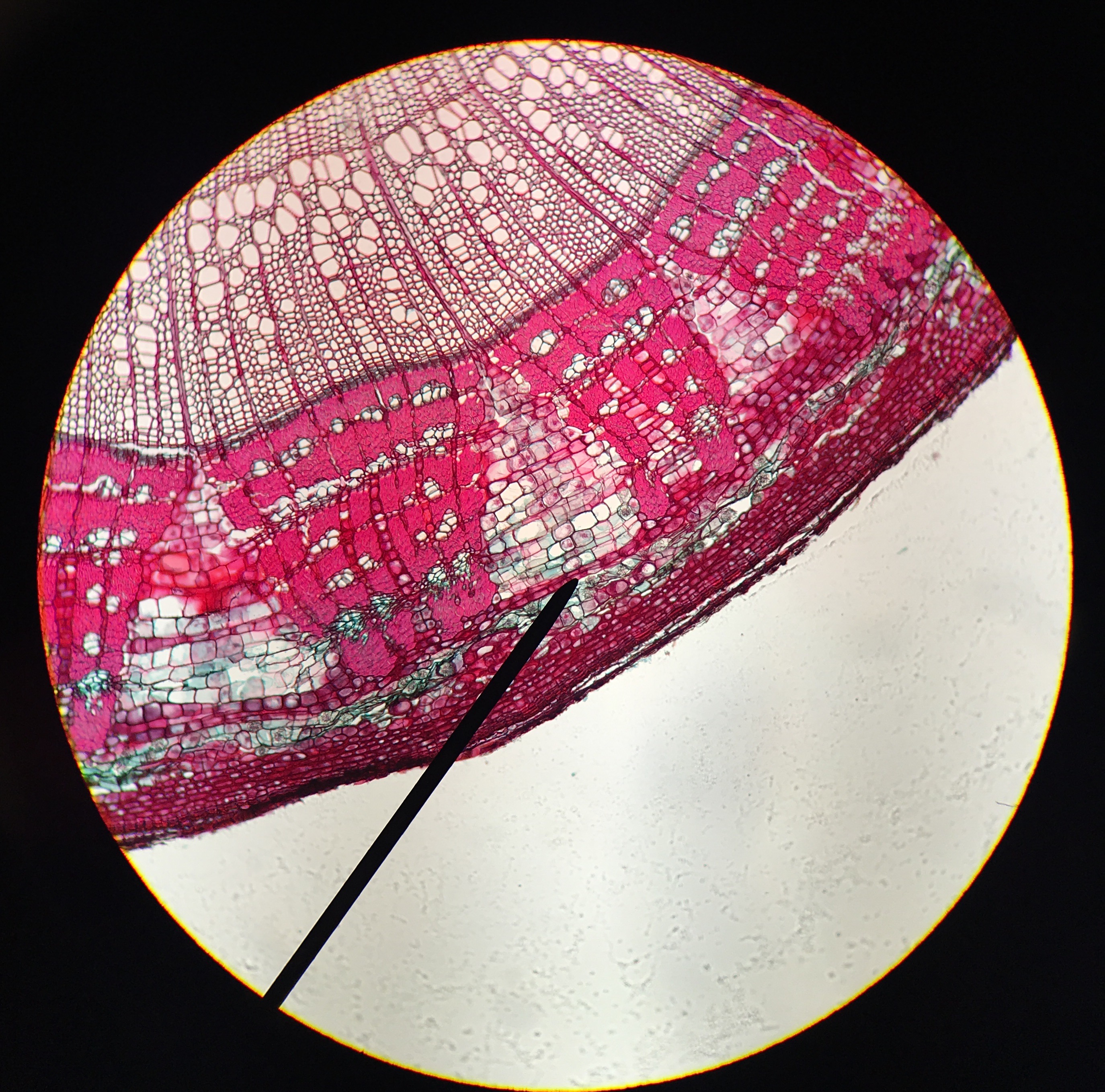Cambium on:
[Wikipedia]
[Google]
[Amazon]
 A cambium (plural cambia or cambiums), in plants, is a tissue layer that provides partially undifferentiated
A cambium (plural cambia or cambiums), in plants, is a tissue layer that provides partially undifferentiated
 A cambium (plural cambia or cambiums), in plants, is a tissue layer that provides partially undifferentiated
A cambium (plural cambia or cambiums), in plants, is a tissue layer that provides partially undifferentiated cell
Cell most often refers to:
* Cell (biology), the functional basic unit of life
Cell may also refer to:
Locations
* Monastic cell, a small room, hut, or cave in which a religious recluse lives, alternatively the small precursor of a monastery ...
s for plant growth. It is found in the area between xylem
Xylem is one of the two types of transport tissue in vascular plants, the other being phloem. The basic function of xylem is to transport water from roots to stems and leaves, but it also transports nutrients. The word ''xylem'' is derived from ...
and phloem
Phloem (, ) is the living tissue in vascular plants that transports the soluble organic compounds made during photosynthesis and known as ''photosynthates'', in particular the sugar sucrose, to the rest of the plant. This transport process is c ...
. A cambium can also be defined as a cellular plant tissue from which phloem, xylem, or cork grows by division, resulting (in woody plants) in secondary thickening. It forms parallel rows of cells, which result in secondary tissues.
There are several distinct kinds of cambium found in plant stems and roots:
* Cork cambium
Cork cambium (pl. cambia or cambiums) is a tissue found in many vascular plants as a part of the epidermis. It is one of the many layers of bark, between the cork and primary phloem. The cork cambium is a lateral meristem and is responsible for ...
, a tissue found in many vascular plants as part of the periderm
Bark is the outermost layers of stems and roots of woody plants. Plants with bark include trees, woody vines, and shrubs. Bark refers to all the tissues outside the vascular cambium and is a nontechnical term. It overlays the wood and consist ...
.
* Unifacial cambium The unifacial cambium (pl. cambia or cambiums) produces cells to the interior of its cylinder. These cells differentiate into xylem tissue. Unlike the more common bifacial cambium found in later woody plants, the unifacial cambium does not produ ...
, which ultimately produces cells to the interior of its cylinder.
* Vascular cambium
The vascular cambium is the main growth tissue in the stems and roots of many plants, specifically in dicots such as buttercups and oak trees, gymnosperms such as pine trees, as well as in certain other vascular plants. It produces secondary xy ...
, a lateral meristem
The meristem is a type of tissue found in plants. It consists of undifferentiated cells (meristematic cells) capable of cell division. Cells in the meristem can develop into all the other tissues and organs that occur in plants. These cells conti ...
in the vascular tissue of plants.
Uses
The cambium of many species of woody plants are edible; however, due to its vital role in thehomeostasis
In biology, homeostasis ( British also homoeostasis) (/hɒmɪə(ʊ)ˈsteɪsɪs/) is the state of steady internal, physical, and chemical conditions maintained by living systems. This is the condition of optimal functioning for the organism and ...
and growth of woody plants, this may result in death of the plant if enough cambium is removed at once. The cambium can generally be eaten raw or cooked, and can be ground to flour
Flour is a powder made by grinding raw grains, roots, beans, nuts, or seeds. Flours are used to make many different foods. Cereal flour, particularly wheat flour, is the main ingredient of bread, which is a staple food for many cul ...
for use in baking.
References
Plant_anatomy {{Botany-stub